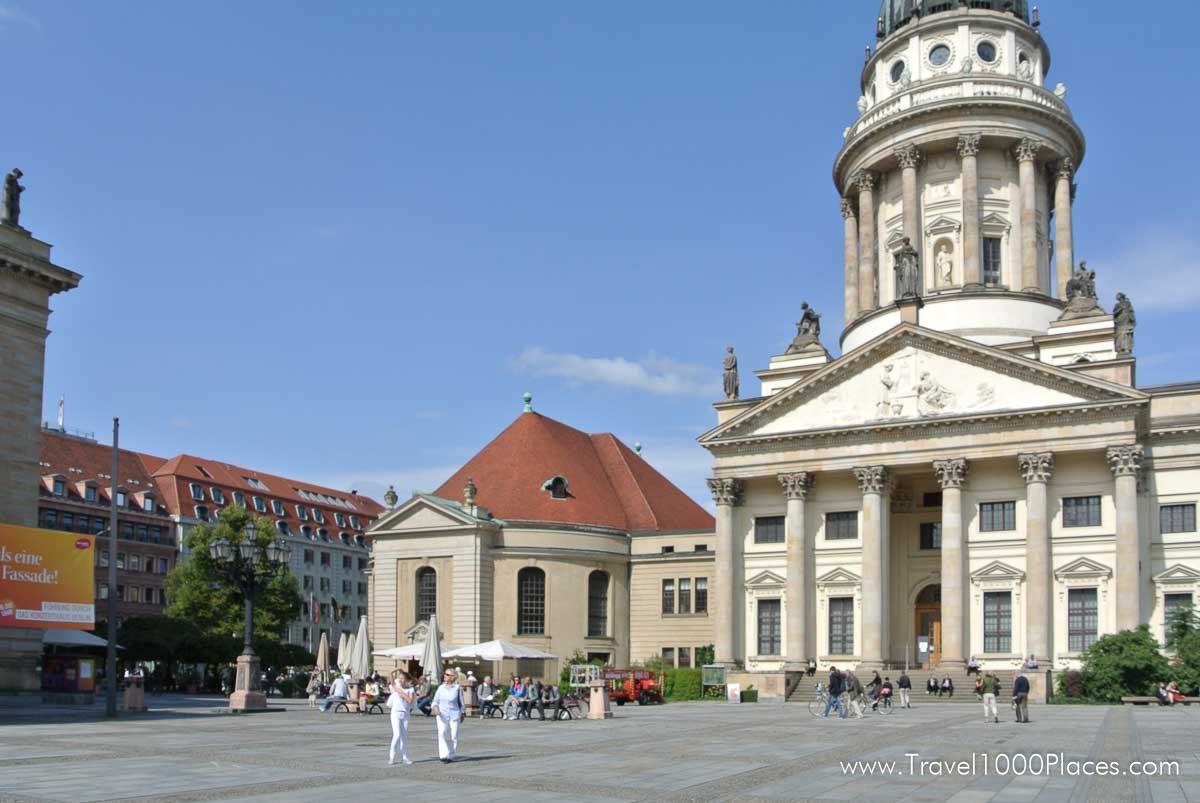
Berlin is a city that would require you to stay for way longer than your vacation to explore the diverse city. It’s comparable to L.A. (California) because Berlin is spread out over such a big square mileage, there’s the (former) East part and the West part of the city and ethnic and social diversity. In Berlin you can find anything, you just need to know where. That is impossible to describe here in this article but we recommend to look for local publications, newspapers, Facebook pages and so on once you are on location.
It is also tough to make a list of ‘the best’ sightseeing places without knowing your specific interests. We compiled a list that is commonly seen as places to visit if you have only a few days in the city.
Potsdamer Platz
Berlin Wall
The Reichstag
Gendarmenmarkt, German and French Cathedral
Schloss Bellevue
The Gedächtniskirche
The Kurfürstendamm
Museums in Berlin
The Brandenburg Gate
World Heritage Sites: Museumsinsel, Modernism Housing Estates, Prussian Palaces
Potsdamer Platz
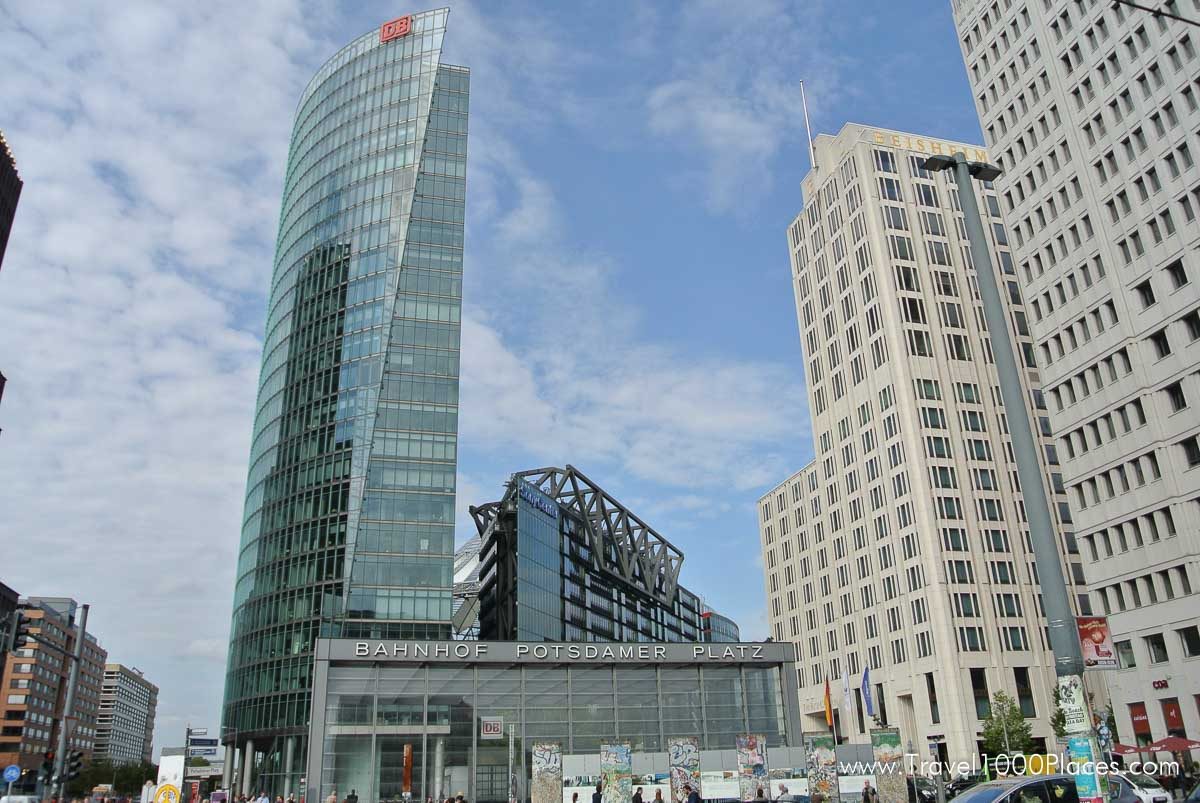
Potsdamer Platz is one of the most popular attractions of the New Berlin.
Berlin – in the very heart of Europe – has been, since time immemorial, a focal point for travelers from all over the world. In the 1930s, Potsdamer Platz carried a greater volume of traffic than any other square in Europe. It was here that the first traffic lights were installed, the replica of which can be admired at this same spot.
Potsdamer Platz is one of the most popular attractions of the New Berlin. With its mix of restaurants, shopping opportunities, theatre and cinemas, both Berliners and tourists are drawn in to pass the time. The former Postdamer Platz is only a small part of the site now bearing its name. The original square was a crossroads which, after the building of the train station Potsdamer Bahnhof, became one of the busiest junctions in Europe and a synonym for the pace of life in the capital.
The square was badly damaged in the Second World War; consequently the junction of the American, British and Soviet sectors, and cut through by the »Wall, the wasteland decayed into a no man’s land in the heart of the city. After the Fall of the Wall the area around Potsdamer Platz became the biggest building site in Europe. Between 1993 and 1998, a completely new quarter arose on the land owned by DaimlerChrysler, with office buildings, shops, hotels, apartments and restaurants as well as the Theater am Potsdamer Platz and a casino. The 22-story debis-Haus was designed by Renzo Piano: its atrium, boasting cathedral-like dimensions, contains Jean Tinguely’s machine sculpture “Meta-Maxi”. Next to this are the Potsdamer Platz Arkaden – a mall with numerous shops – and an IMAX cinema. In the year 2000, the Sony Center opened on Kemperplatz, and now houses Sony’s European headquarters. Seven buildings surround the forum, which is conceived as a light-flooded arena with a tented roof. The futuristic building also houses the new Filmhaus with the Filmmuseum, two cinemas and an IMAX film theatre, as well as restaurants. Until building work began on the new Potsdamer Platz, the Hotel Esplanade was a solitary ruin in the former wasteland between East and West Berlin. In a spectacular feat of engineering, the Breakfast Room and the Emperors’ Room were integrated into the Sony Center. The neo-baroque Emperors’ Room, weighing 1,300 tons, was lifted onto air cushions and moved around 70 metres to its present position. It is now a restaurant. In the red clinker-clad Kollhoff building, the express elevator – the fastest in Europe – leads to a panorama platform with breathtaking views over the whole area. Early in 2004, the noble Beisheim Centerwas opened at Lenné-Dreieck. The complex of hotels, offices and residential units reminds of early modern American skyscrapers. The nearby Delbrück Haus, designed by architect Hans Kollhoff.
Berlin Wall
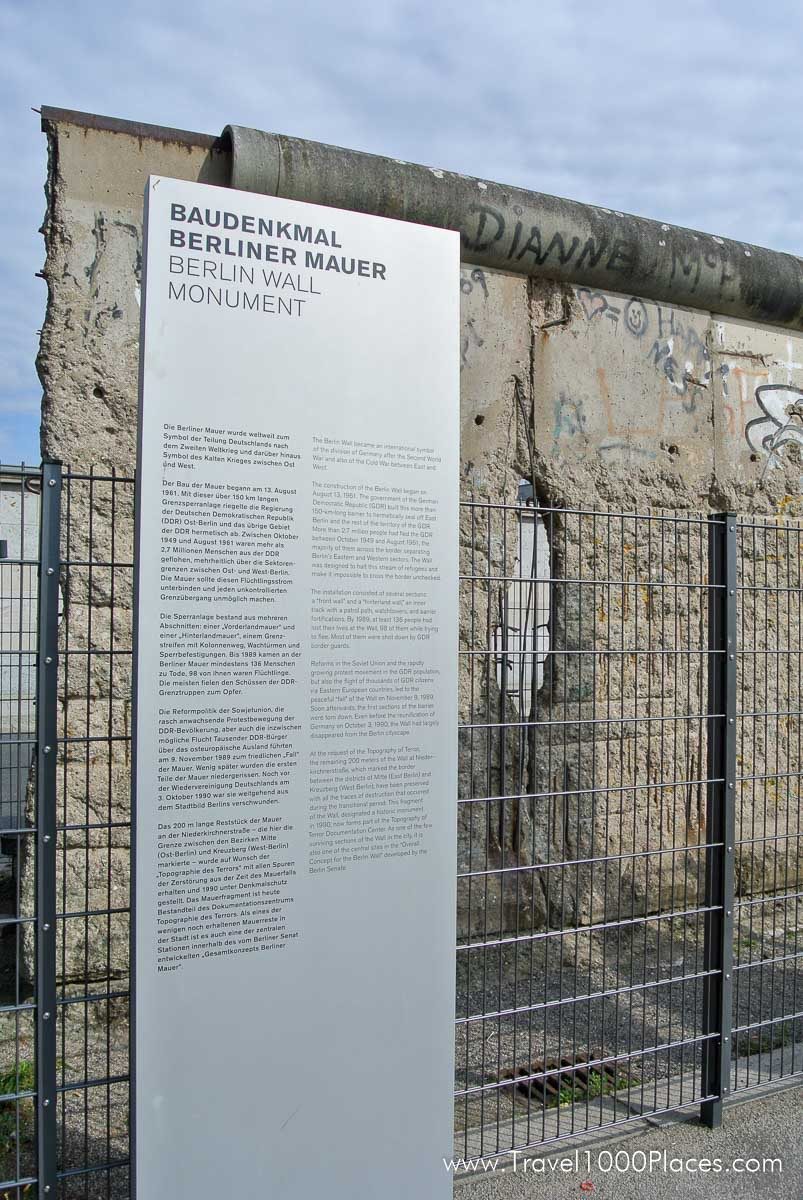
The Berlin Wall earned the city a sorry reputation around the world for almost 30 years.
What little remains of it can be seen in the East Side Gallery, on Bernauer Straße, next to the Preußischer Landtag and in Prenzlauer Berg. Berlin has long since emerged from the shadow of the Wall, however.
The East Side Gallery is the world’s longest open air gallery and, with 1,316 m, is also the longest remaining part of the Berlin Wall? The section was painted by 118 artists from 21 countries with 101 works.
All the years after it came down, the city, subsequently regarded as the “workshop of unity”, has reinvented itself. It is now associated with top-class architecture, modernity and a fast pace of life. The German capital, whose profile will continue to change, is more attractive
While the Wall was standing, visitors from the western part of the city who wanted to visit the eastern part had to exchange at least DM25 into GDR Marks at a rate of 1:1 which could not be changed back? Money which was not spent could be left at the border (for possible further visits). For tourists from West Germany, a visa cost DM5; West Berliners didn’t have to pay for the visa.
READ MORE ABOUT The Berlin Wall History
The Reichstag
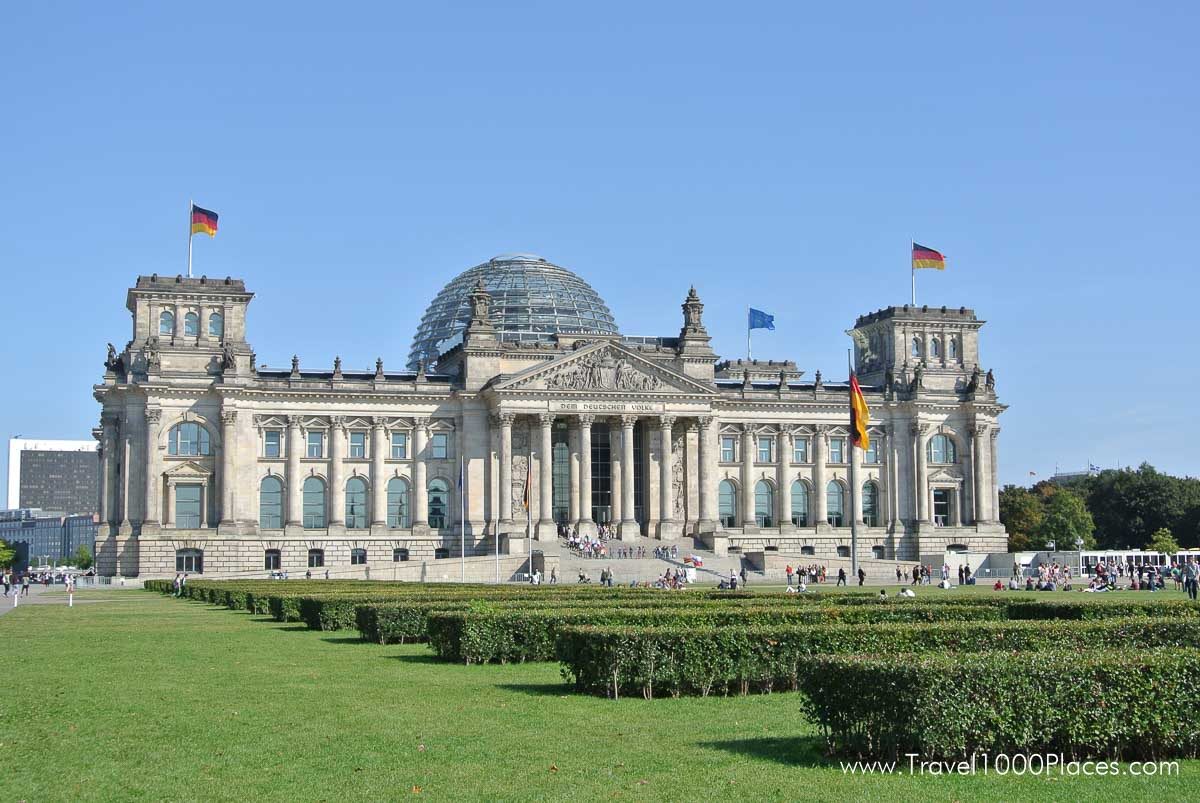
The Reichstag is the seat of the German Bundestag or federal government and, with its new dome, one of the Berlin’s biggest crowd-draws in Berlin. Its colorful past reflects the turbulence of German history since the 19th century. The Reichstag was constructed from 1884–94 by Paul Wallot, since a representative building was needed to house the parliament of the newly-founded German state.
The inscription “Dem Deutschen Volke” (“To the German people”) was only added in 1916 during the First World War, because Wilhelm II. had previously been against it. On 9 November 1918, the politician Philipp Scheidemann announced the establishment of the Republic from one of its windows. Part of the Reichstag was destroyed in a fire on 27 November 1933: the exact cause has never been identified, but the fire was used by the Nazis to justify their persecution of political opponents. After the war, the devastated building was rebuilt in a simplified form from 1961–71 to plans by Paul Baumgarten, but it was not used for parliamentary functions. The dome, which had been blown up in 1945, was not rebuilt. Inside the edifice bordering the »Berlin wall there was an exhibition, “Questions on German History”, which is now displayed in the »Deutscher Dom.
After reunification, the German Federal Government decided to use the building as a parliament once again. From 1994–99 the Reichstag was reconstructed and extended by the Architect Sir Norman Forster, taking into consideration both the immense historical implications and its function as a modern working parliament, and adding an accessible dome. Before the renovation work began in 1994, the building became the stage for one of the most spectacular art events in Europe: it was wrapped by Christo and Jeanne Claude. The glass dome, which was at first the subject of great controversy, has now become one of the newest landmarks in the city. Since 1999 the Reichstag building has once again been the seat of the German Bundestag.
Gendarmenmarkt,German Cathedral and French Cathedral

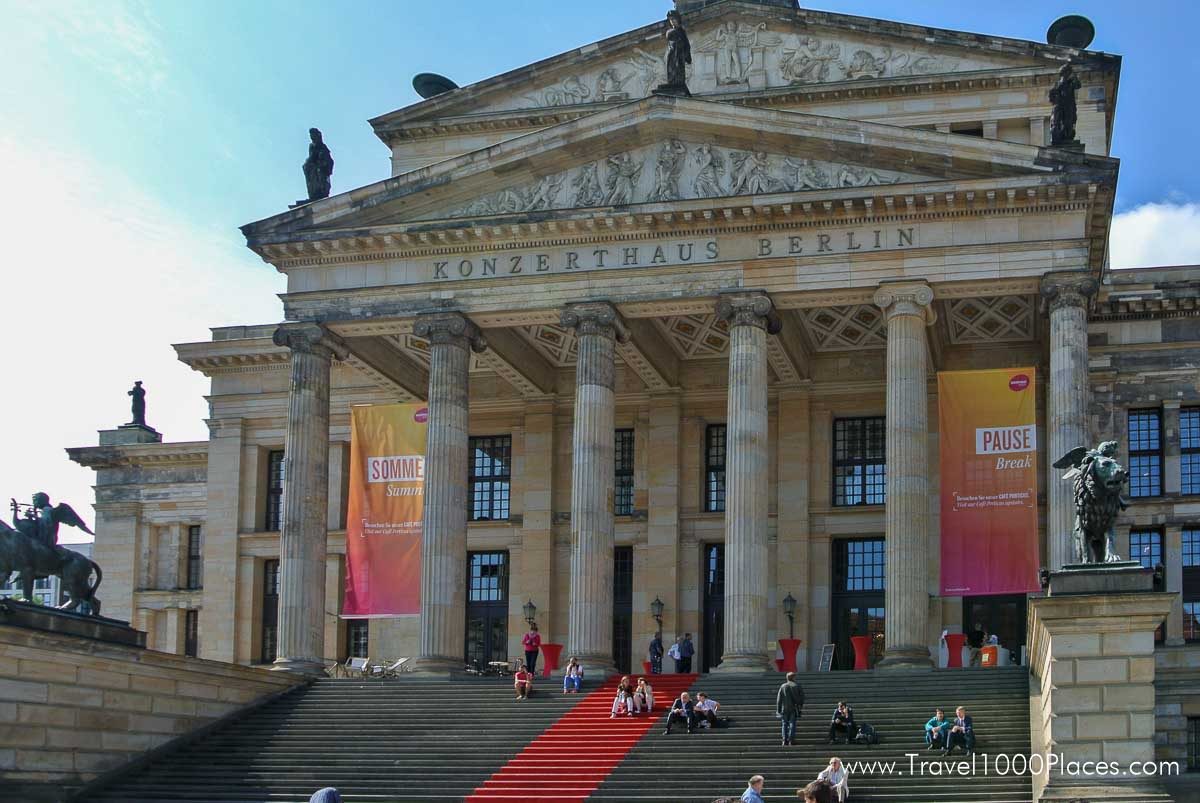
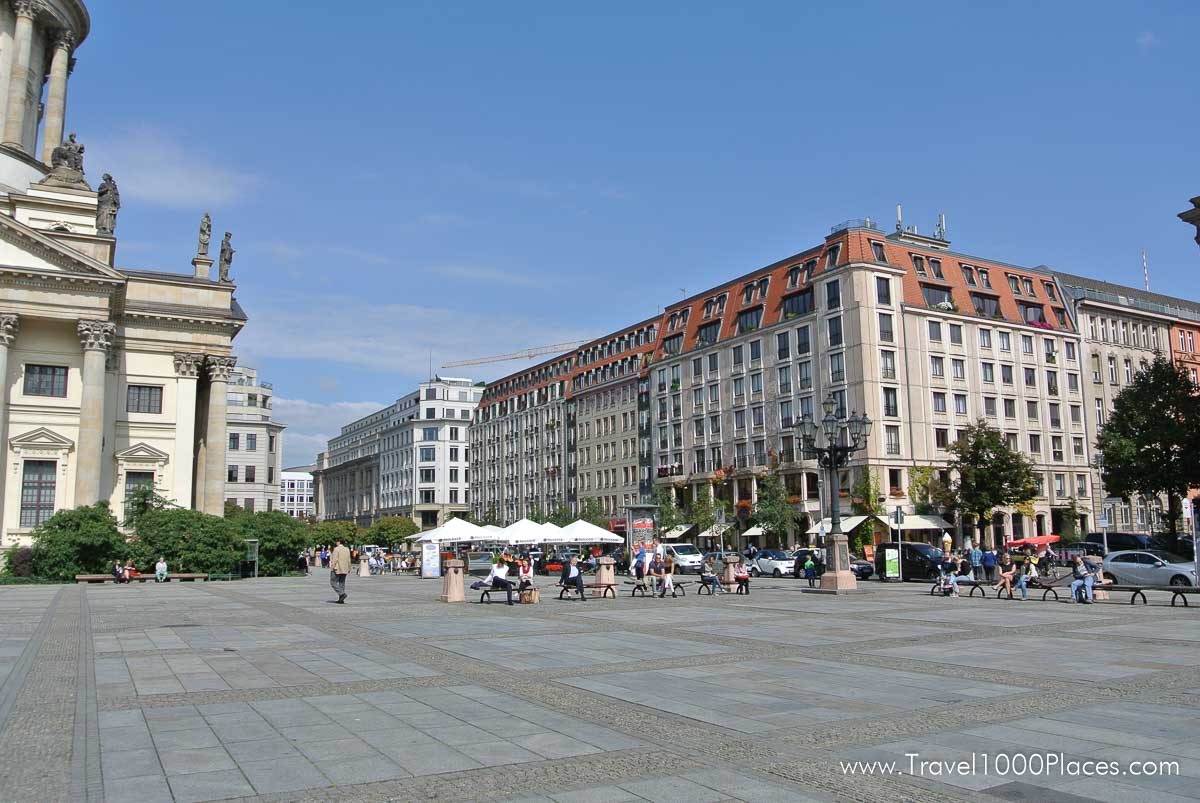
Gendarmenmarkt is one of the most beautiful squares in Europe – a must for every tourist. Here the Deutscher Dom (German Cathedral), the Französischer Dom (French Cathedral) and the Konzerthaus create a beautiful architectural ensemble. The square was laid out from 1688 to the plans of J.A. Nering; it was originally known as Linden Markt, then Friedrichstädtischer Markt or Neuer Markt. Because the square was used by a curassier regiment “gens d´arms,” from 1736–82, complete with sentry boxes and stables, the name Gendarmenmarkt arose. From 1777, the square was developed according to unified plans drawn up by Georg Christian Unger. It was badly damaged in the Second World War; on the occasion of the 250th anniversary of the Prussian Academy of the Sciences (Akademie der Wissenschaften), it was renamed “Platz der Akademie,” but its previous name was restored in 1991.
Französischer Dom (French Cathedral)
The church Französische Friedrichstadtkirche was built from 1701-05 to the designs of Cayart, as a church for Berlin’s Huguenot community, thus the reason for its name. From 1780-85, the imposing tower of the French cathedral (Französischer Dom) was added to plans by Gontard and Unger as part of the redesigning of Gendarmenmarkt. The cathedral, which was badly damaged in the war, was rebuilt from 1977.
Deutscher Dom (German Cathedral)
From 1701-08, the so-called “Neue Kirche” was built by Giovanni Simonetti to plans to M. Grünberg. From 1780-85, Carl von Gontard extended the building with the addition of the domed tower of the “German Cathedral”, during the redesigning of the Gendarmenmarkt. The cathedral was destroyed in the Second World War and reopened on October 2, 1996 following complete restoration.
After reunification, the German Federal Government decided to use the building as a parliament once again. From 1994–99 the Reichstag was reconstructed and extended by the Architect Sir Norman Forster, taking into consideration both the immense historical implications and its function as a modern working parliament, and adding an accessible dome. Before the renovation work began in 1994, the building became the stage for one of the most spectacular art events in Europe: it was wrapped by Christo and Jeanne Claude. The glass dome, which was at first the subject of great controversy, has now become one of the newest landmarks in the city. Since 1999 the Reichstag building has once again been the seat of the German Bundestag.
Schloss Bellevue
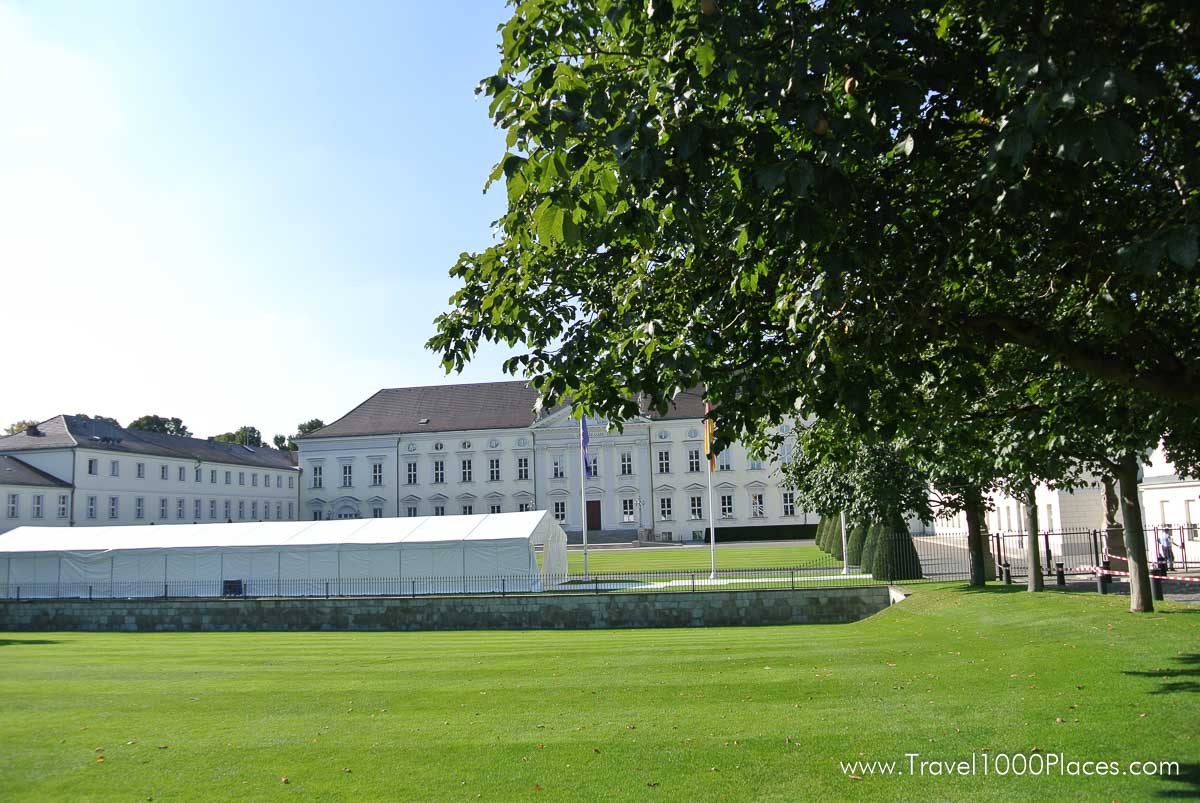
Schloss Bellevue is now the official residence of the federal president in Berlin.
Schloss Bellevue is now the official residence of the federal president in Berlin. The three-winged complex was constructed in 1785/86 to plans by Philipp Daniel Bouman, and was the first Berlin palace to be built in the classical style. The elongated main building is flanked by side wings (on the left the “Ladies’ Wing”, on the right the “Spree Wing”). The two-story main building’s elaborate design contrasts with the completely plain, three-storied side wings. On its gables are sandstone figurines depicting Agriculture, Fish Farming, and Hunting. Inside there is a ballroom designed by Carl Gotthard Langhans in 1791, which is now used for official receptions. The palace has not been inhabited since the 19th century and was used by various institutions.
The current centered entrance was redesigned in 1938, when the building was converted to be the guest house of the government of the Third Reich. Badly damaged in the Second World War, the palace was renovated from 1954–59 as the official residence of the Federal President in Berlin. The smaller buildings in the garden were completely destroyed.
The Gedächtniskirche
The Gedächtniskirche or Memorial Church on Kurfürstendamm is a monument to peace and reconciliation…
…and the internationally famous symbol of Berlin’s desire to rebuild itself in the aftermath of the war. The Gedächtniskirche consists of an ensemble of church ruins and the modern buildings which surround it, and is consequently characterized by the stark contrast of history and modernity.
The neo-Roman church, which was intended to recall the glory of the first German Kaiser, was built in an ornamental style from 1891-95 to plans by Schwechten. After the church was destroyed in an air raid in 1943, the ruins – a constant, unavoidable reminder of the horrors of war for Berliners – were supposed to be demolished to make way for the planned new building in 1956.
After a storm of emotional protests, it was decided to integrate the ruins into the new building. The modern building was constructed from 1959-61 to plans by Egon Eiermann and consists of three elements. It is constructed of honeycombed concrete components into which glass bricks are set. The church tower, with the christening and matrimonial chapel, is built on a hexagonal foundation. The colored glass bricks bathe the interior of the octagonal nave in an intense blue light, and create an atmosphere of calm. The smallest, rectangular building was planned as a sacristy, but now houses the city mission. The memorial hall in the old tower is a memorial of the horror and destruction of war.
The Kurfürstendamm
The Kurfürstendamm is the most popular boulevard in Berlin, among Berliners and visitors alike
From the Gedächtniskirche, it stretches for 3.5 km right out to Halensee, where the exclusive villa districts of West Berlin begin. In the lively upper part of Kurfürstendamm and its extension, Tauentzienstraße, there are countless department stores, fashion chain stores and other stores. The lower part is quieter: here, designer stores reside in magnificent turn-of-the-century buildings.
Between 1883 and 1886 Kurfürstendamm was laid out as a boulevard with bridle path, and opulent developments arose along it. In the Twenties, it became the meeting point of Berlin’s intellectuals, with countless theatres, cafés and nightclubs.
In 1913, the “Marmorhaus” became the first film theatre, but like many other cinemas on Kurfürstendamm it was forced to close in recent years.
Badly damaged in the Second World War, Kurfürstendamm was cleared and redeveloped in the Fifties, with tower blocks and terraced buildings. It is still the Berlin’s showpiece boulevard, and new buildings are appearing on it once again. In 2001 was the opening of the new Kranzlereck – the corner previously inhabited by the famous Café Kranzler – with offices, stores and a new café in the traditional rotunda with its red-and-white striped marquee roof.
The Kudamm Corner at Joachimsthaler Straße, a constructional faux pas from the Sixties, has been demolished, and a new building is being constructed on the site. At Lehniner Platz stands the Schaubühne, a theatre building in the expressive style of the Twenties. In the quiet side streets such as Fasanenstraße, the most exclusive shopping street in the city, there are many smaller, exclusive boutiques and cafés, housed in buildings dating from the turn of the previous century.
The Brandenburg Gate & Pariser Platz
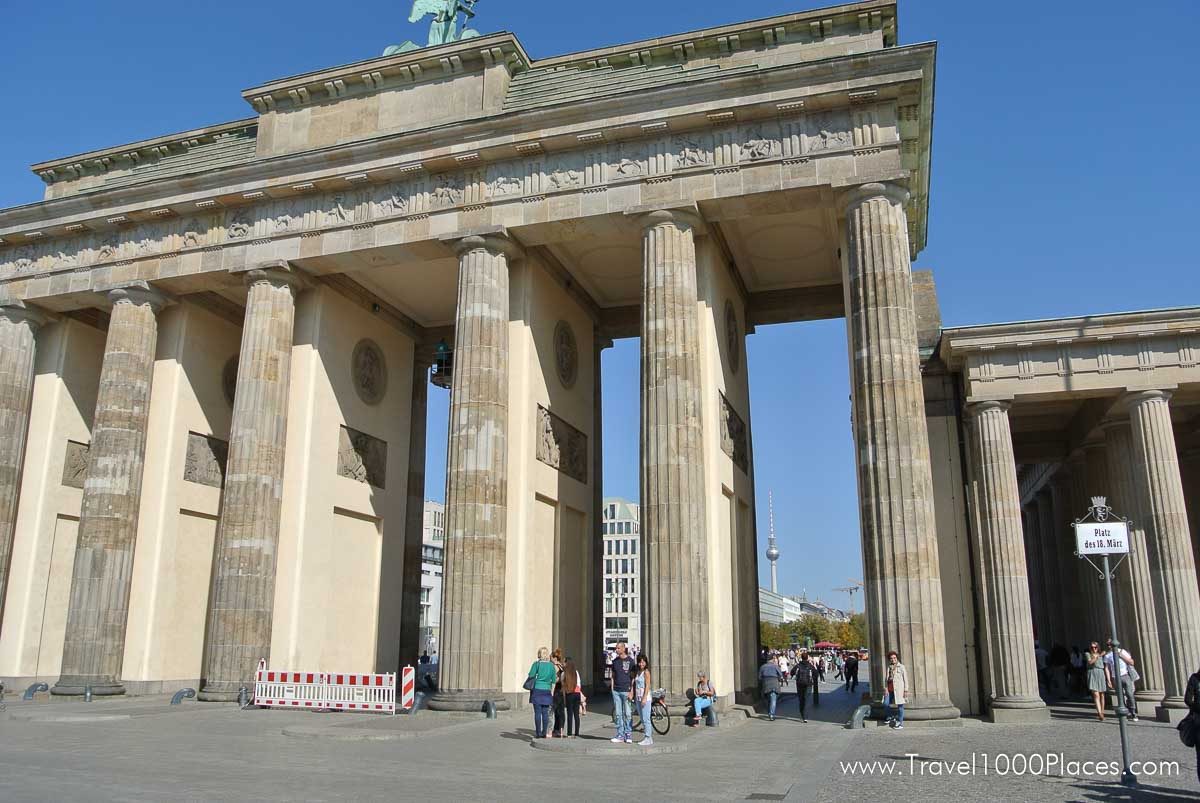
The Brandenburg Gate, Berlin’s only remaining city gate, is the true symbol of the city.
Because it was situated in the no man’s land just behind the »wall, it also became symbolic of the division of the city.
After the Fall of the Wall, the Gate was reopened on December 22, 1989.
The sandstone construction, built from 1788–91 to plans by C.G. Langhans, has 12 Doric columns and is based on the propylaeum of the Acropolis in Athens. On both sides, six Doric columns support the 11 meter-deep transverse beam, dividing the gate into five passageways. In 1794 the building was crowned with the quadriga and goddess of victory created by Schadow, which face eastwards towards the city center. The Brandenburg Gate was surrounded by further buildings which were destroyed in the war.
After the decision of Berlin’ s senate on October, 22 The Brandenburg Gate remains closed for cars, cabs and busses. Berliners and their guests can enjoy now the renewed beauty of the Pariser Platz.
Pariser Platz
As part of the reconstruction of Pariser Platz, new buildings have been added which are based on their historic forebears. Pariser Platz forms the link between the Brandenburg Gate and the magnificent »Unter den Linden boulevard.
It was originally a parade ground before barracks were built at the end of Unter den Linden during the reign of Friedrich Wilhelm I. Noble villas, embassies and the luxurious Hotel Adlon arose around the square. The square was destroyed in the Second World War.
Since the Fall of the Wall, new buildings by renowned international architects have been and are being built.
The Liebermann House and the Sommer House, newly constructed to the left and right of the Brandenburg Gate, were conceived as a pair, and their design is based on the previous buildings created by Stüler. The Dresdner Bank building follows the architectural conventions of Pariser Platz closely, without degenerating into historicism.
Museums in Berlin
In Berlin there are more museums than rainy days
Berlin is noted for its unique variety of museums, including many collections relating to archaeology and the history of art. They document the 6,000 years of the development of civilization in countries ranging from Europe to the Far East.
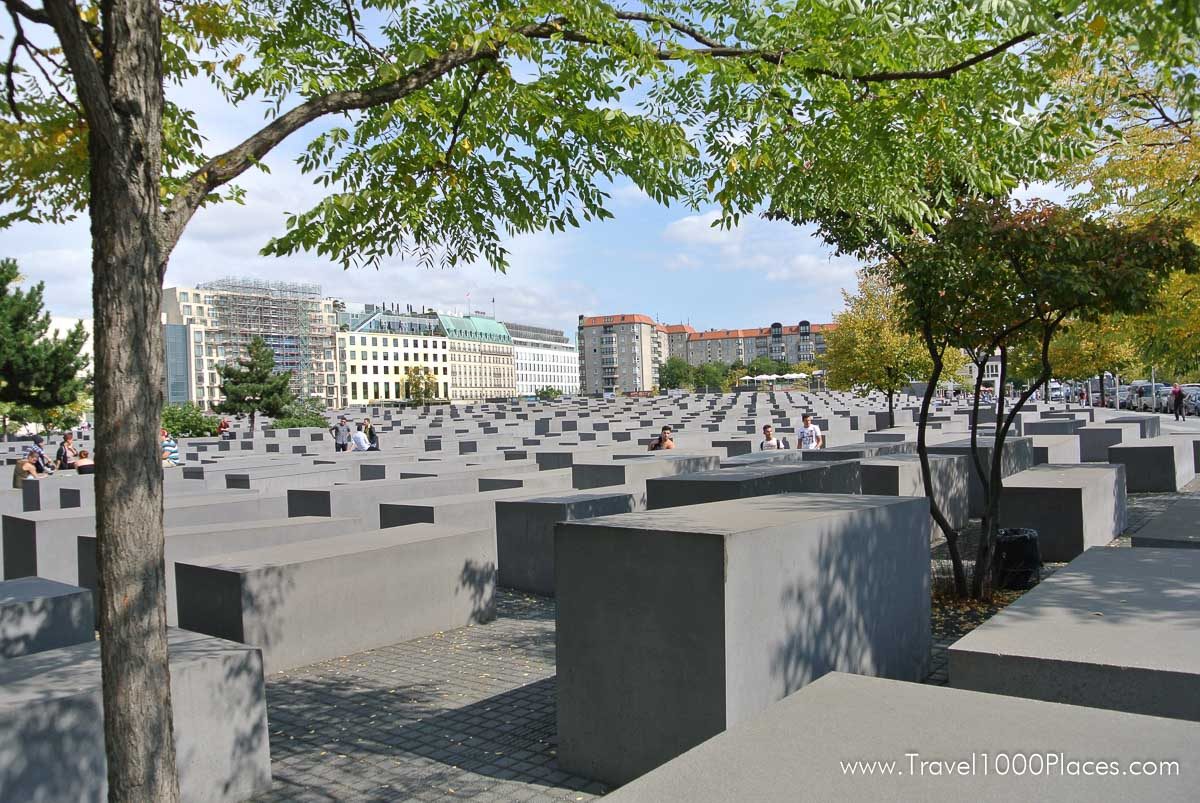
Jüdisches Museum in Berlin
On the Spree there are more museums than rainy days – a total of approx. 175, 18 of which were new additions in the last five years alone.
They include the Jewish Museum in the impressive new building designed by Daniel Libeskind, the Old National Gallery with 19th century art on the world-renowned Museum Island and the bold new building of the German Historical Museum at Zeughaus bearing the signature of the reputed American architect I.M. Pei.
Helmut Newton Foundation / Museum for Photography, the Flick Collection
… one of the most important collections of contemporary art in the world – and the Berlinische Galerie in the former glass depot Alte Jakobstraße.
Berlin’s Gemäldegalerie (Painting Gallery)
which opened in 1998 unites the magnificent paintings of the Bode Museum (in the former east of the city) and the museums in Dahlem (in the city’s former west) and is, with the Eremitage in St. Petersburg, the Prado in Madrid and the Louvre in Paris, one of the most visited art museums in Europe.
Museum Island (Museumsinsel)
The world’s largest ‘universal museum’ was created in the heart of Berlin. The restoration and re-design of the Museum Island with its five monumental buildings is Germany’s was one of most ambitious cultural project. Museum Island, a world cultural heritage site since 1999, has been renovated and shines in new splendor. Around 1,5 billion Euros were invested by then.
The Pergamon Museum with its 2,000-year-old Pergamon Altar (on the Museum Island), is the world’s first archaeological museum and is, going by the number of visitors, the city’s favorite museum.
Besides the world-famous collections there are also more unusual ones such as the Sugar Museum, a Laundry Museum, a Hemp Museum, and the Erotic Museum which provide a fun alternative.

